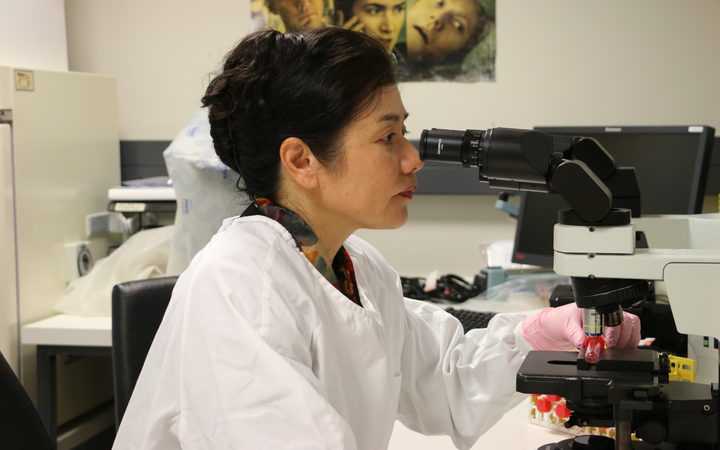A long term surveillance study could hold the clues to developing a Covid-19 vaccine.
The national lab, ESR monitors more than 2000 people as part of large
scale research into influenza and its vaccine effectiveness.
 The study's principal investigator is virologist Dr Sue Huang (file picture).
Photo: RNZ/Philippa Tolley
The study's principal investigator is virologist Dr Sue Huang (file picture).
Photo: RNZ/Philippa Tolley
The programmes, called SHIVERS II and WellKiwis look at both adults over a number of years and new-borns to age seven.
The study's principal investigator, Dr Sue Huang, said expanding to
include the Covid-19 virus will help global research to better
understand the pandemic.
Participants have swabs and blood taken every season to monitor for
influenza, but a test for SARS-CoV-2 - the virus that causes Covid-19 -
will also be added.
Dr Huang said this would help to get a clearer picture of the virus and what it looks like in a New Zealand population.
"This is a very new virus, we have a lot of knowledge gaps.
"We want to understand all those details and through this study we
hope that understanding will help guide vaccine development, or guide
immune therapy approach."
There was still little information about how people infected with the virus developed antibodies, she said.
Or why young children got milder illnesses, while elderly people were more prone to severe disease.
-
If you have symptoms
of the coronavirus, call the NZ Covid-19 Healthline on 0800 358 5453
(+64 9 358 5453 for international SIMs) or call your GP - don't show up
at a medical centre
 Photo: AFP
Photo: AFP
It was important to understand the difference in immune systems and why people presented differently, she said.
As well as helping research into a vaccine, the long term study from various tests would give researchers more data.
"That gives us an understanding about the population immunity against
the Covid virus, and at the same time if people haven't been infected
with the Covid virus then we would know they don't have immunity and
they would be susceptible to the Covid virus."
Public Health officials would ultimately be able to use the data to tailor their response, Dr Huang said.
"Knowing the proportion of asymptomatic or mildly ill cases is
important as it will help us to understand what is driving this Covid-19
pandemic."
The studies have previously been limited to one participant in the
home, but now involve the whole household because of the information
that can be gathered about how the virus spreads.
"The household is a valuable setting to understand the chain of
transmission, the clinical spectrum of illness and the amount and
duration of virus being shed from infected individuals."

Comments
Post a Comment